

A Walk through the Bonsai Courtyards
Explore the Bonsai courtyards
Among the Chicago Botanic Garden's world-class plant displays is a specialty collection of close to 200 priceless bonsai — trees that have been trained to grow in pots or trays. These miniature artworks are the same trees we can grow in our own gardens, but they have received the attention and care of professional bonsai masters, and that has made all the difference in the world. Through a careful process of pruning branches and roots, pinching back new growth, wiring and shaping tree forms, and monitoring each plant's individual need for fertilizer, soil mix, water, and sunlight, they have been transformed into living sculptures. These azaleas, maples, junipers, ginkgoes, and pines have achieved an idealized form of botanic beauty, quite apart from the trees in our backyards.
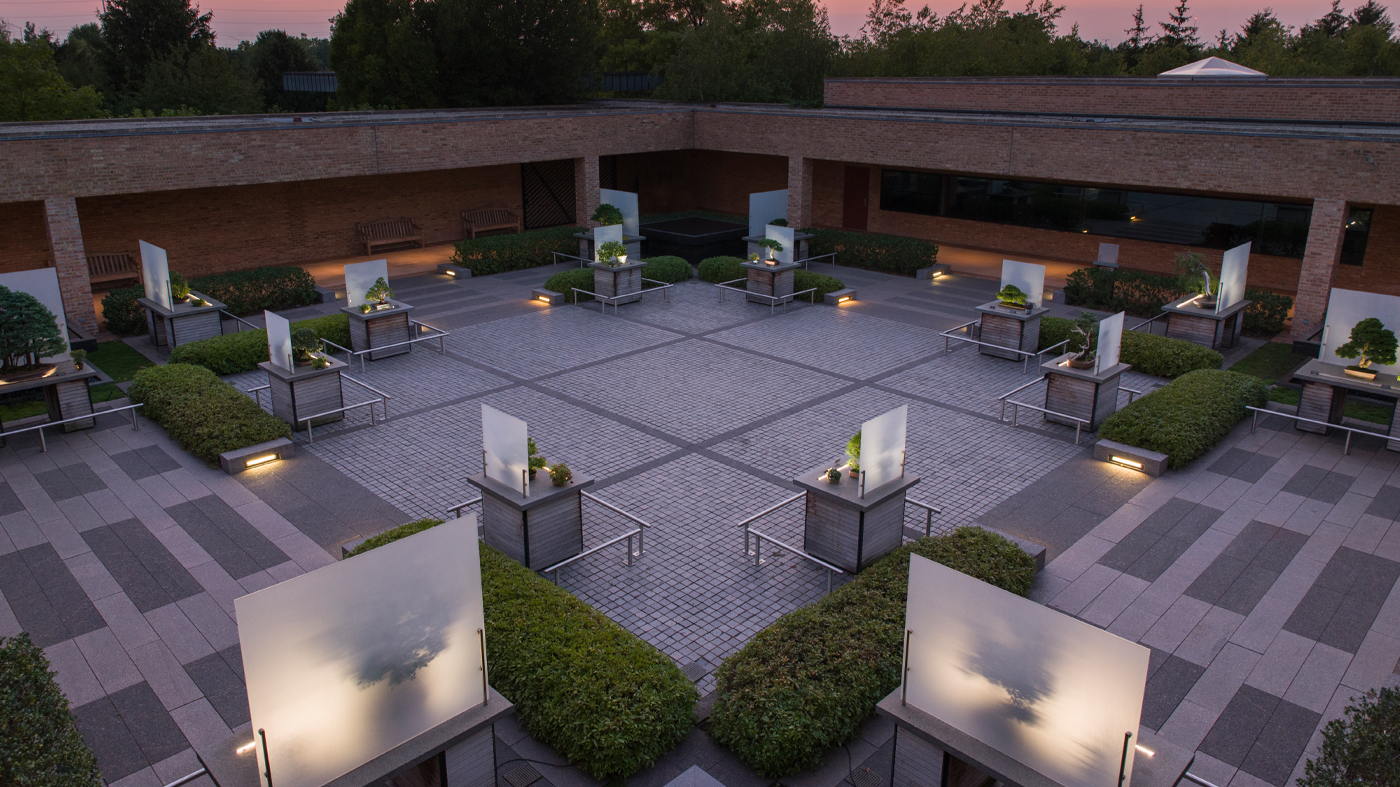
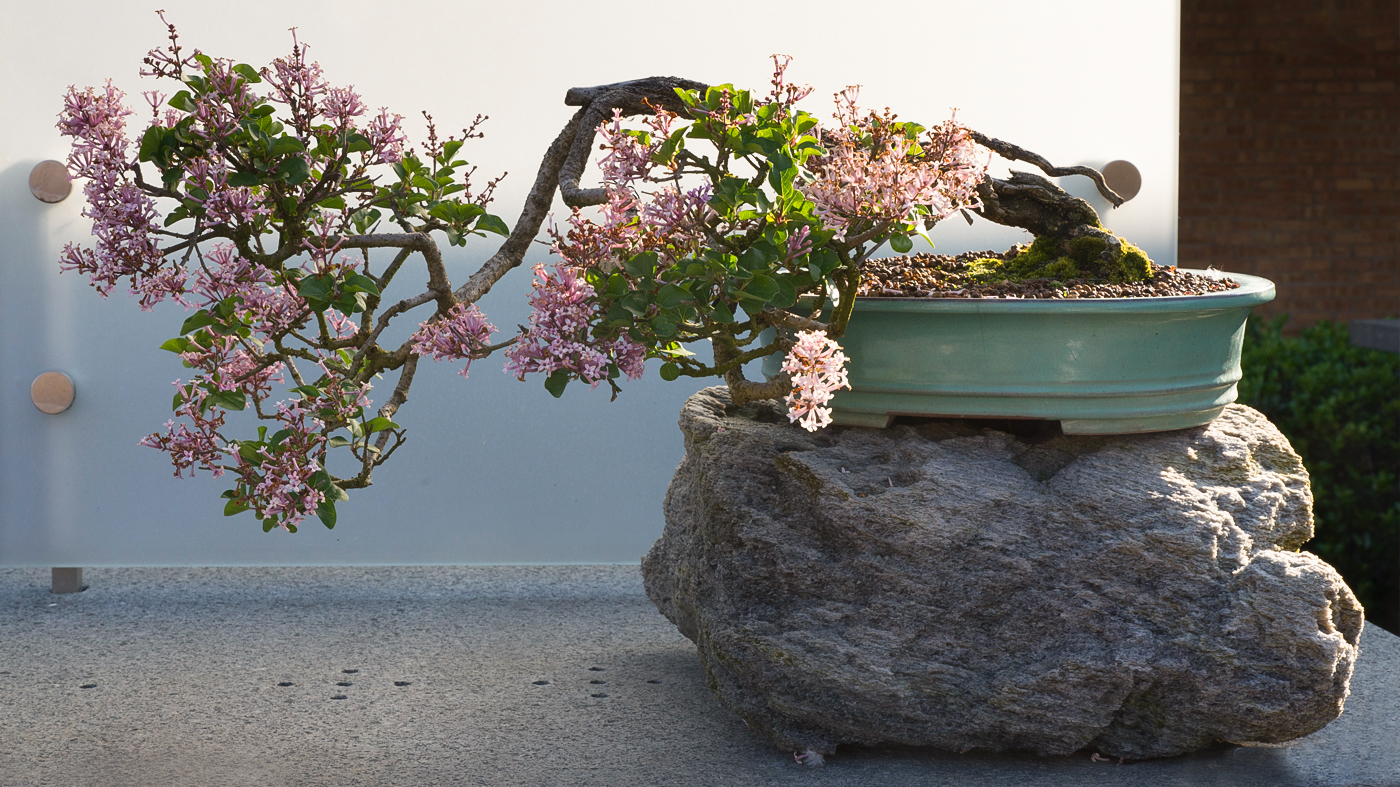
Public outdoor display
From this collection, 50 of the showiest trees, at their prime moments of ornamental appeal, are chosen for public outdoor display in the Searle and Runnells Courtyards adjacent to the Regenstein Center. Trees are selected and then rotated into the courtyards when their most beautiful attributes can be admired by all visitors. A few spectacular highlights must include the spring-blooming azaleas and magnolias; the summer-blooming bougainvilleas and jasmine; the autumn color change of the maples and ginkgoes; and the majestic all-season power of the pines and conifers. This outdoor exhibit opens in late April and lasts until approximately early November, or such time when the bonsai experts determine the trees must return to their specific greenhouses where they spend winters in carefully controlled environments suited to their species.
Outside, each tree is displayed on a granite bench with a frosted glass backdrop. The benches have edge lighting so the bonsai can be lit at night — a dramatic difference from their daytime appearance. Accompanying the individual specimen bonsai are small companion pieces that are chosen to accent the primary plant. They might be tiny plants themselves, or miniature floral arrangements, small stones or incense burners — something to enhance the bonsai, but never steal the show. The geometric planes of the courtyard design allow the bonsai to command the viewer's full attention. Anchoring each corner of the courtyard are flat, polished black granite fountains that quietly drip water into a bed of river rocks below, where a miniature moss garden grows, benefiting from the spray of water droplets. Visitors familiar with the Elizabeth Hubert Malott Japanese Garden will note similar themes in that garden and in the bonsai courtyards — the use of quiet water, moss, stone and statuary, and highly pruned plants. Here, hedges of blue holly and compact Korean azalea frame the granite pavers underfoot and provide a green relief to the hardscape.
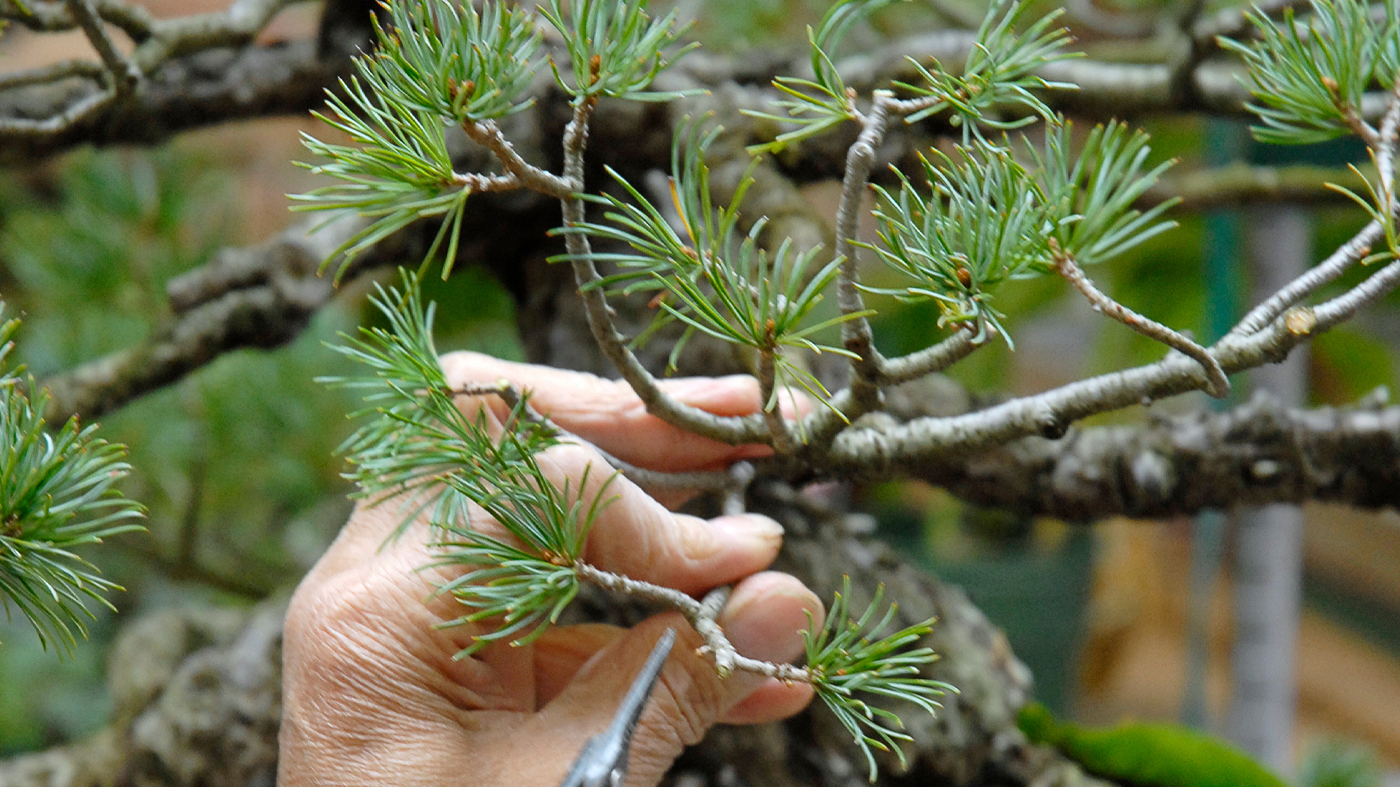
Advanced technique
As visitors remark on the beauty before them, what they do not see is the intense work required to train a small sapling into a mature tree, which appears almost ancient. The Garden maintains a staff of committed bonsai practitioners, including a bonsai curator, a bonsai master, a production manager, and a team of highly skilled volunteers who meet every week to review the collection. The immediate needs of each plant are addressed, as well as the more long-term strategies, which would involve pruning, repotting, wiring, as well as closely watching plants for any sign of disease or insect attack. Workshops and special training sessions are held regularly so that all might benefit from the educational techniques advanced by the bonsai master.
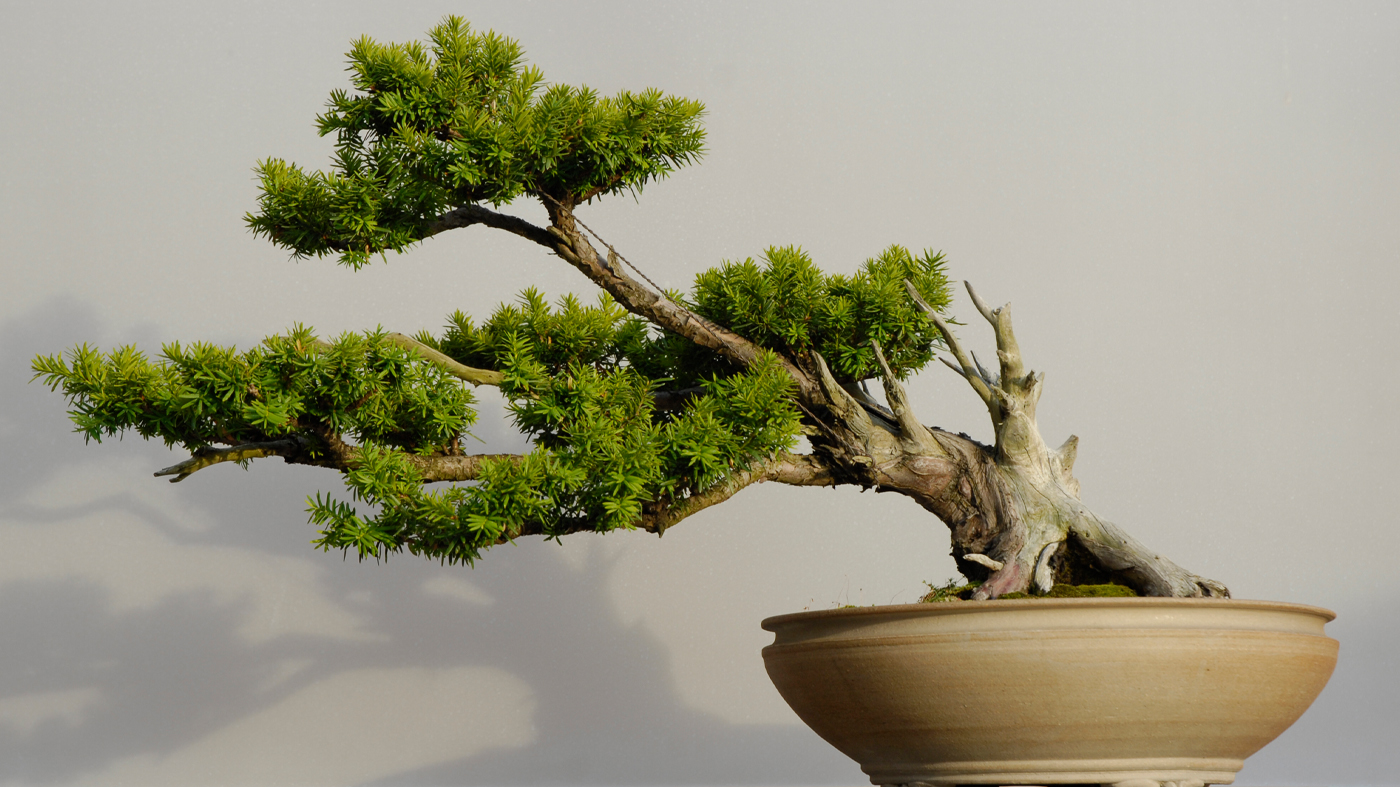
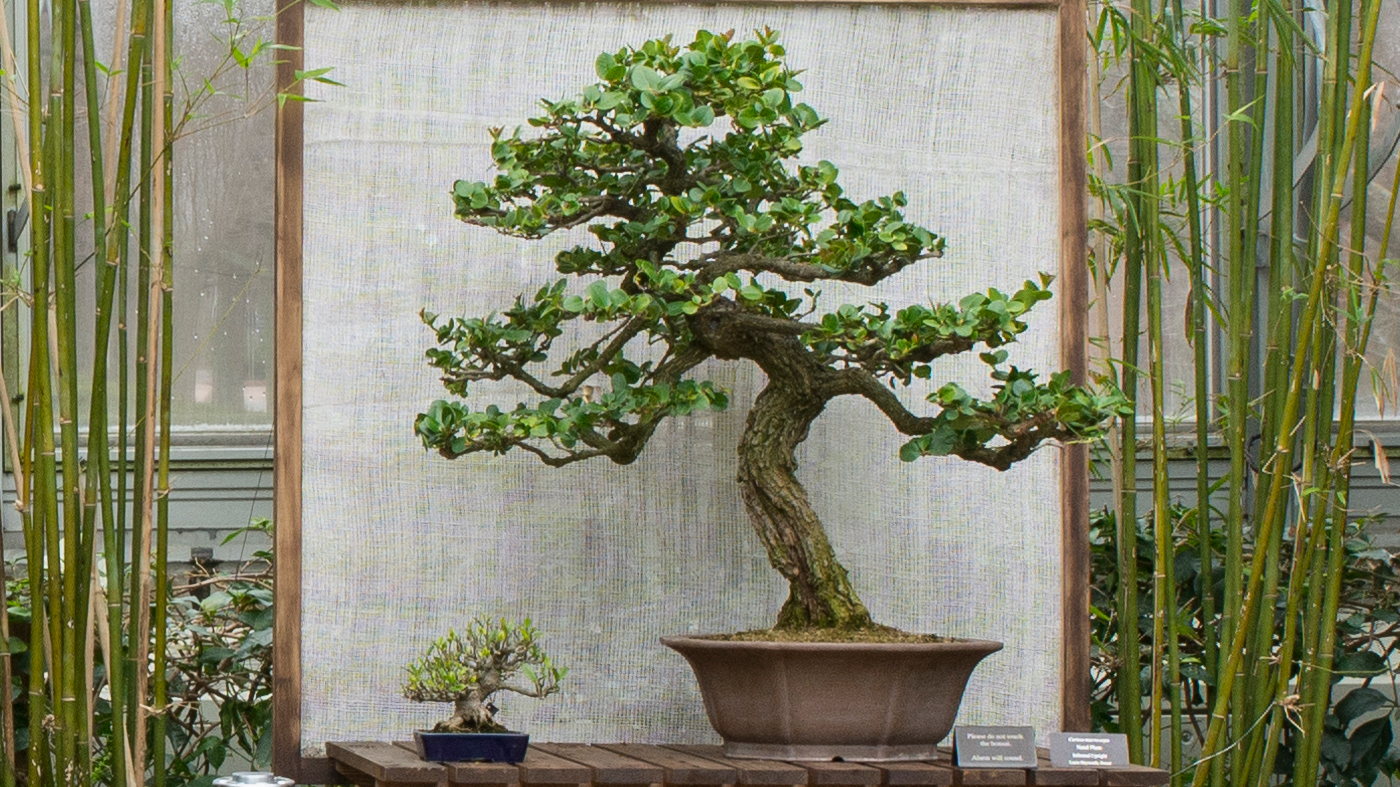
There are 27 styles of bonsai in this collection
Each officially recognized style is intended to enhance or call attention to certain characteristics of the plant when grown in the wild. Some styles are quite apparent: the windswept pine, the cascading star jasmine, or the forest of junipers. Other styles are more subtle, such as the broom style of the Stewartia, or the informal upright style of the Chinese fringe flower tree. Pines are a favorite specimen because they grow abundantly in Japan and have adapted to Japan's rocky coastlines, higher elevations, and extreme wind that bends branches and trunks naturally, with no need for guide wires. Other favorite plants that reflect the culture and climate of Japan are the maples, especially the trident maple, full moon maple, and Japanese maple; and the azaleas, which put forth a much-anticipated color show in early spring, both in the bonsai courtyards and in the Malott Japanese Garden.
Because these plants are small and grow in pots does not mean they are houseplants. Quite the contrary. Most of them are hardy trees, which, like their larger counterparts, need to have a cold period in order to survive. A pine tree cannot grow indoors; nor can a maple or a juniper. In November, when the hardy deciduous trees throughout the Garden have shed their leaves and prepared for winter dormancy, the bonsai are moved to the south end of the Garden, where they will be separated out and housed in protective greenhouses. The hardy evergreens could not spend winters outside because their roots are not anchored firmly in insulating ground; they are precariously planted in just a few inches of soil and would quickly freeze if exposed to a typical Chicago winter. These trees are kept dormant in a greenhouse that remains between 30 and 35 degrees. The tropical bonsai, like jasmine, bougainvillea, and ornamental fig are kept much warmer at 65 to 75 degrees. Special lights are turned on for them when short winter days lack the light they need. Even in winter, these prized plants receive daily attention.
As you watch the bonsai during the next two months, you will see how they mirror the landscape around them — changing color, dropping their leaves, forming seedpods or fruit just like their larger counterparts outside the courtyards. Be sure to catch their autumn show and look for them again next April when they return in all their spring glory.

